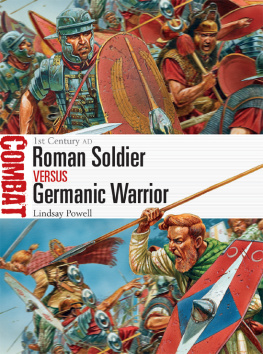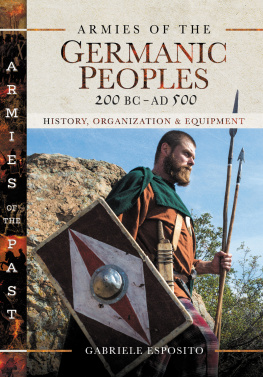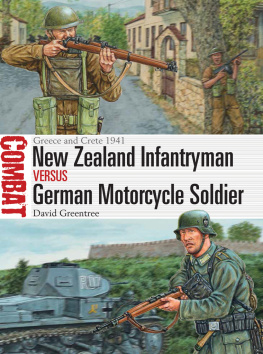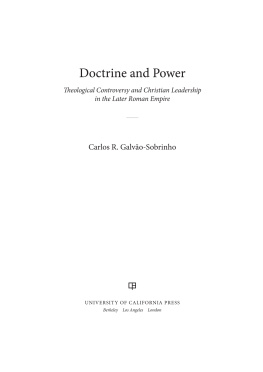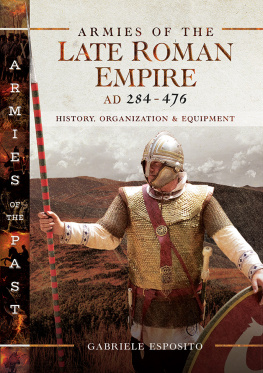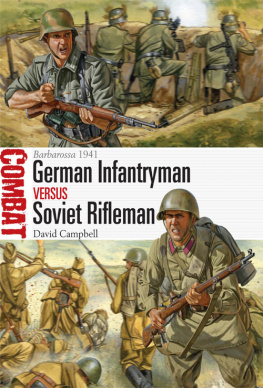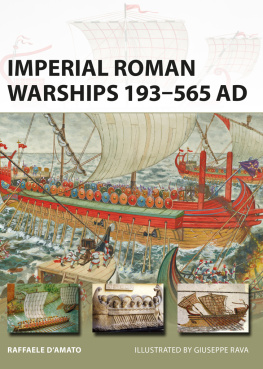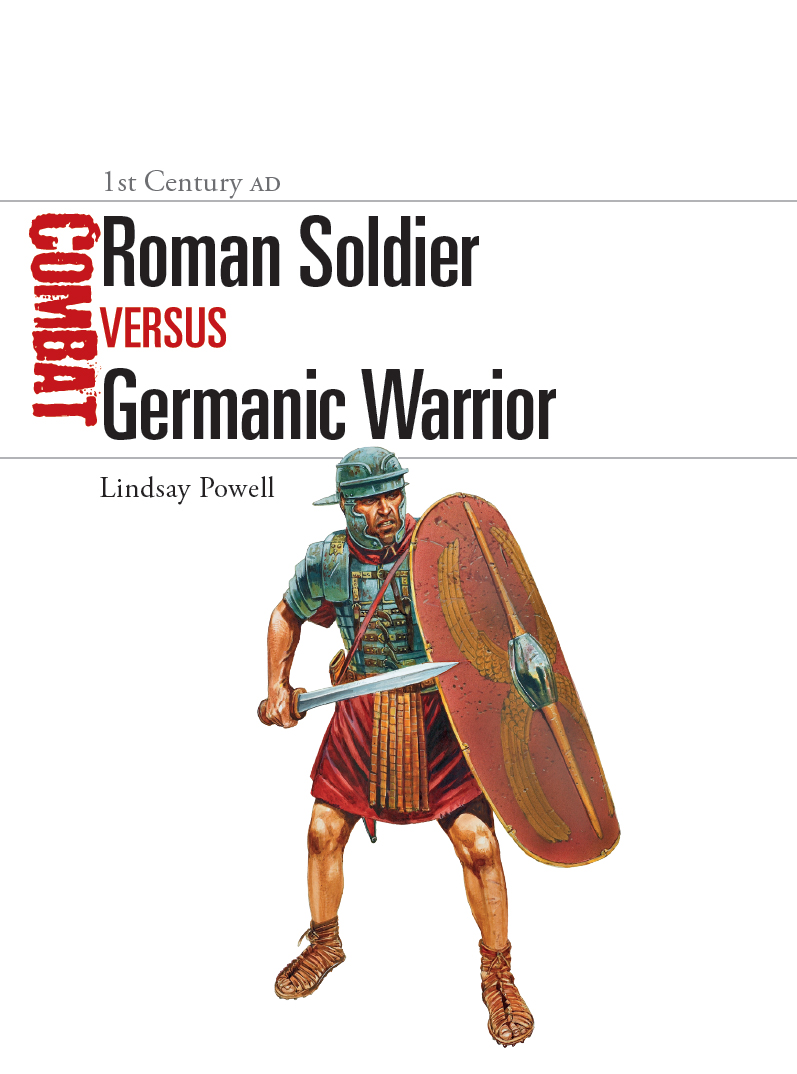CONTENTS
Introduction
Who would leave Asia, or Africa, or Italia for Germania, with its wild country, its inclement skies, its sullen manners and aspect, unless indeed it were his home? (Tacitus, Germania 2). This negative perception of Germania the modern Netherlands and Germany lay behind the reluctance of Romes great military commanders to tame its immense wilderness. Caius Iulius Caesar famously threw a wooden pontoon bridge across the River Rhine (Rhenus) in just ten days, not once but twice, in 55 and 53 BC . The next Roman general to do so was Marcus Agrippa, in 39/38 BC or 19/18 BC . However, none of these missions was for conquest, but in response to pleas for assistance from an ally of the Romans, the Germanic nation of the Ubii. It was not until the reign of Caesar Augustus that a serious attempt was made to annex the land beyond the wide river and transform it into a province fit for Romans to live in. Successive explorations had established its boundaries:
Germania is separated from the Galli, the Raeti, and Pannonii, by the rivers Rhenus and Danuvius [Danube]; mountain ranges, or the fear which each feels for the other, divide it from the Sarmatae and Daci. Elsewhere ocean girds it, embracing broad peninsulas and islands of unexplored extent, where certain tribes and kingdoms are newly known to us, revealed by war. (Tacitus, Germania 1)
However, its scale eluded the geographers of the Ancient World, including the best minds Agrippa had brought together to compile a Map of the World (Orbis Terrarum):
the dimensions of its respective territories it is quite impossible to state, so immensely do the authors differ who have touched upon this subject. The Greek writers and some of our own countrymen have stated the coast of Germania to be 2,500 miles in extent, while Agrippa, comprising Raetia and Noricum in his estimate, makes the length to be 686 miles, and the breadth 148. (Pliny the Elder, Natural History 4.28)
Such inaccurate measurements made military planning problematic from the outset. When compared to Agrippas combined measurement of the three conquered provinces of Aquitania, Belgica and Gallia Comata or Long Haired Gaul (420 Roman miles long by 318 miles wide), the whole of Germania was only eight times greater. It had taken the army of Iulius Caesar just nine years to reduce these Three Gallic Provinces (Tres Galliae). Hispania had taken 200 years. On that basis the conquest of Germania seemed an attainable objective.
The land was inhabited by a patchwork of tribal nations (nationes). The Romans referred to them collectively as Germani, but they identified themselves by tribal names. Some like the Sugambri were related to the Iron Age Celts who inhabited Gaul, while others, such as the Cherusci, shared a different cultural and linguistic tradition called Germanic. Some nations were ruled by kings, while others were collectives that elected their leaders. Most people lived relatively independently with their families on farms, rather than in towns, though at least one is known: Mattium, the capital of the Chatti (the location of which remains obscure).
During the reign of Augustus (27 BC AD 14), the basic unit of the Roman Army (exercitus) was the legion, derived from the Latin word legio meaning military levy. Soldiers (legionarii) for the army were recruited exclusively from male citizens principally from Italy, but their numbers were increasingly augmented by volunteers (volones) from the provinces. There were 28 legions of 5,6006,000 men each in service at the start of AD 9. Additionally there were elite Praetorian Cohorts initially nine, but rising to 12 in the later part of Augustus principate perhaps representing 12,000 men in all, located at camps around Italy. To supplement the ranks of the Roman legions, non-citizen allies from outside the empire were recruited and formed their own units (alae, cohortes) of 500 or 1,000 men each. These ethnic auxiliary troops were particularly important for providing specialist infantry, such as archers (sagittarii) from Crete and cavalry (turmae) from the foothills of the Alps. Several Germanic nations served the Roman army in this capacity, often under their own chiefs. Among them were the Batavi, Chauci, Cherusci, Frisii, Sugambri and Ubii. The exact number of auxiliary units in service at the start of AD 9 is not known, but they made up about half of Romes total military forces.
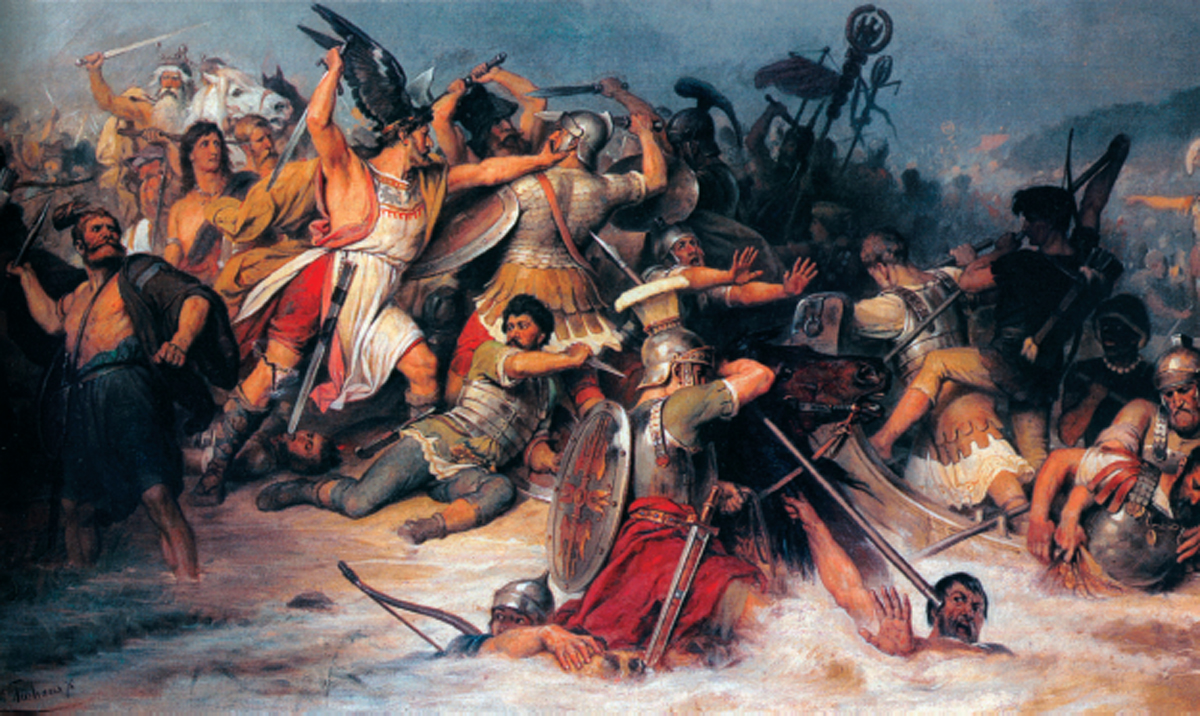
In 17 BC an alliance of Tencteri and Usipetes nations led by warchief Maelo of the Sugambri raided into the Roman province of Gallia Belgica. Encountering them by chance, the governor Marcus Lollius was ambushed and the eagle standard of Legio V Alaudae was captured by the Germans. The event became known as the Clades Lolliana Lollian Disaster. It was the trigger for Caesar Augustus to embark on a re-assessment of north-western border security, leading to the conception of a war to annex Germania. This 19th-century painting by Friedrich Tshaus romantically evokes a clash on the banks of the Rhine between the Roman Army and Germanic warriors, complete with anachronistic winged helmets. (Public domain)
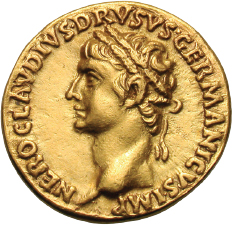
Nero Claudius Drusus (Drusus the Elder) led the first serious attempt at conquering Germania for the Romans. In preparation for his campaigns in 14 BC he founded legionary fortresses whose locations on the Rhine became permanent bases and then important cities of the empire, and have survived to our own day. After his death following a riding accident in 9 BC , the Senate posthumously awarded him the honorary war title Germanicus, meaning the German or of Germania. His sons were permitted to adopt the title. This gold aureus was minted by his youngest son, Emperor Claudius. (Harlan J. Berk. Authors collection)
A permanent fleet of ships (classis) for sea patrols was based at Misenum on the Bay of Naples to patrol the sea-lanes used by grain ships sailing between Italy, Africa, Sicily and Egypt. A fleet was located at Ravenna, which patrolled the Adriatic coastline, and another established by Drusus the Elder in 13 or 12 BC operated from several bases along the Rhine to assist the army of Germania with its operations. At full strength the combined manpower of legionary, Praetorian, auxiliary and marine forces may have amounted to 300,000330,000. In AD 9 about one third were stationed at forts along the Rhine or its tributaries. Romes emerging German province and its borderlands were home to a diverse community of many different nations.
The catalyst for the outright conquest of Germania appears to be a raid by an alliance of German nations under the leadership of Maelo of the Sugambri, in 17 BC . By chance they encountered and ambushed the Roman governor (legatus Augusti pro praetore) and his Legio V Alaudae, taking the legions eagle standard (aquila) as a trophy. The humiliation became known as the Lollian Disaster (Clades Lolliana). The following year Augustus replaced his governor with his eldest stepson (and future emperor) Tiberius Claudius Nero, and joined him in person in Gaul to carry out an assessment and lay down plans for war. In preparation for it, in 15 BC Augustus youngest stepson, Nero Claudius Drusus (Drusus the Elder), was given command of an army and with it he annexed the territory of the Raeti in northern Italy and the central Alps, and that of the Vindelici in the Bavarian Voralpenland. The next year Drusus the Elder assumed the governorship of the Three Gallic Provinces and with it responsibility for prosecuting the war in Germania.

